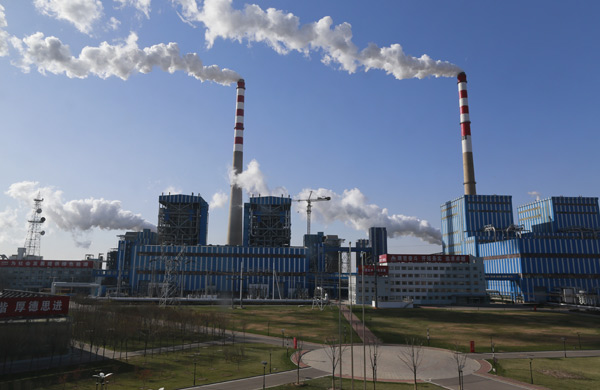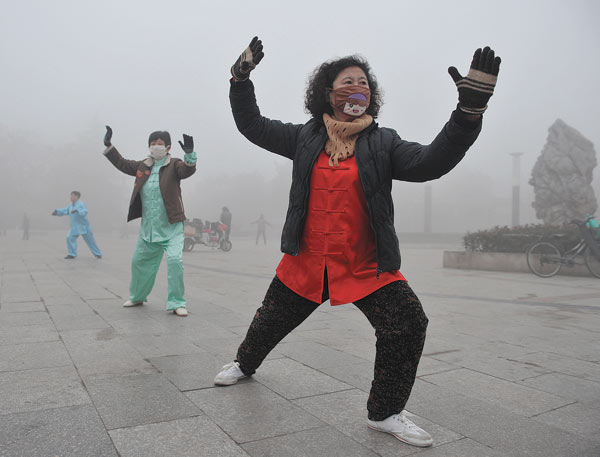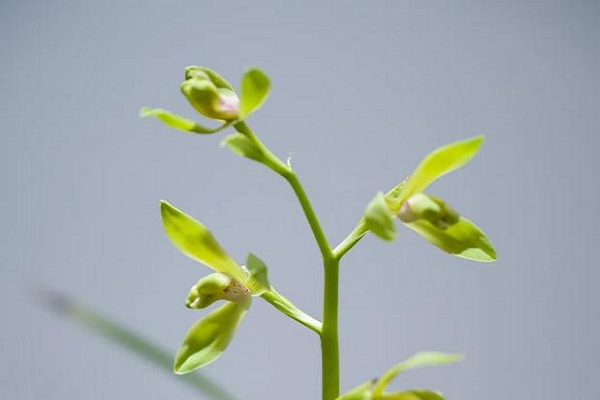 |
|
Chimneys at the Dagang Power Plant in Tianjin, which mainly emit water vapor. PHOTO BY FENG YONGBIN / CHINA DAILY |
Major urban areas face reduced visibility, increased accidents over the weekend, Wu Wencong reports in Tianjin and Beijing.
China's most developed regions were attacked by smog over the weekend.
A total of 104 cities in 20 provinces in and near China's two largest industrial clusters - the Beijing-Tianjin-Hebei region and the Yangtze River Delta region - fell victim to heavy smog that reduced visibility to less than 10 meters in some places, according to the Environmental Protection Ministry.
The situation will gradually improve from Sunday after wind blows away dirty air, the National Meteorological Center of China Meteorological Administration said on Sunday.
This was the second time heavy smog has covered so many cities this year. Thick haze shrouded many cities for more than 20 days in January, affecting more than 600 million people in 17 provinces, municipalities and autonomous regions.
Air quality issues may not be solved soon, experts say.
China is experiencing what developed countries experienced about 20 to 30 years ago, when smoggy and hazy weather caused by fast urbanization and an unreasonable urban layout frequently occurred, said Peng Yingdeng, an environmental impact assessment expert from the Ministry of Environmental Protection.
"If urban planning does not take the diffusion of pollutants into consideration, smog will plague China for at least another 10 to 20 years," he told Beijing News.
The latest wave of smog, which first swept into Shanghai and Jiangsu province on Dec 1, has caused at least four car accidents due to low visibility, claiming six lives nationwide. The most serious accident was in Jiangsu on Dec 4, which involved almost 20 vehicles and left three dead and many injured.
Highways, water transportation and flights have been suspended or limited in the past few days.
PM2.5 levels in Shanghai hit a record on Dec 1: an average of 582 micrograms per cubic meter for the whole city, with the highest level exceeding 700 in the Putuo district.
The World Health Organization has a safety guideline of 25 for PM2.5, particulate matter smaller than 2.5 microns that can go deep into the lungs.
Policies have been issued in the past few months, including a vow to cut PM2.5 levels in the Beijing-Tianjin-Hebei cluster by 25 percent by 2017 from 2012 levels.
A six-month inspection campaign was launched in October.
 |
|
Morning exercisers brave heavy smog in Fuyang, Anhui province, on Sunday. Nearly half of the country is choked in some of the worst air this year. LU QIJIAN / FOR CHINA DAILY |


